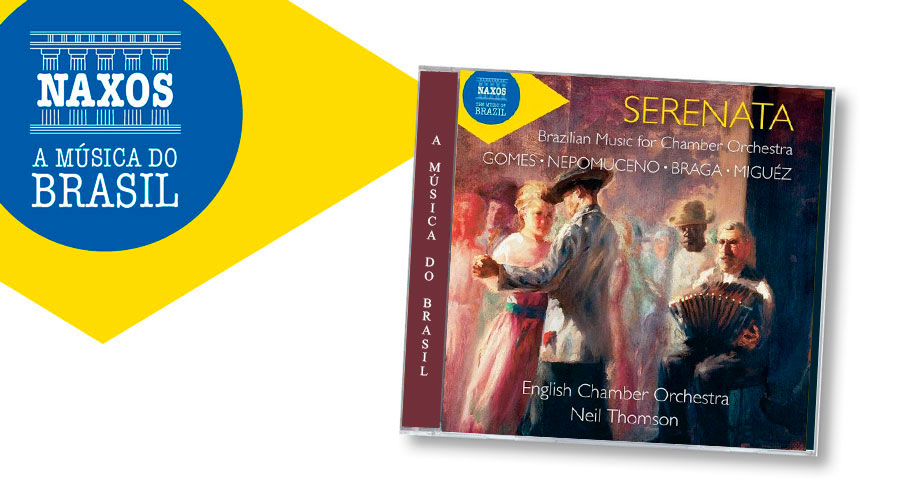
SERENATA
Brazilian Music for Chamber Orchestra
English Chamber Orchestra
Neil Thomson – regente
O projeto Música do Brasil do selo Naxos vai contemplar, ao longo dos próximos anos, a gravação de cerca de cem obras de compositores brasileiros, fazendo um inédito panorama da criação musical do país do século XIX aos nossos dias. Os discos lançados até agora dão conta de um projeto sem precedentes e de enorme qualidade. É o caso também do novo item da série, em que a English Chamber Orchestra, um dos mais tradicionais grupos ingleses, registra peças de Leopoldo Miguez, Alberto Nepomuceno, Francisco Braga e Carlos Gomes. A regência é de Neil Thomson, cuja dedicação ao repertório nacional tem sido fundamental. Ao reunir esses quatro autores, o álbum joga luz a um período que apenas recentemente tem passado por revisão: o romantismo brasileiro. Nesse contexto, a Serenata de Carlos Gomes é testemunho da importância da linguagem operística no período; a Suíte antiga, de Nepomuceno, evoca danças à luz do fim do século XIX; e as peças de Miguez (Suíte em estilo antigo) e Francisco Braga (Madrigal-Pavana) esboçam uma identidade brasileira, em um momento em que todos esses autores dialogam entre a influência europeia e a busca por novos caminhos composicionais.
Clique AQUI para comprar na Loja CLÁSSICOS
Clique AQUI para ouvir no Spotify
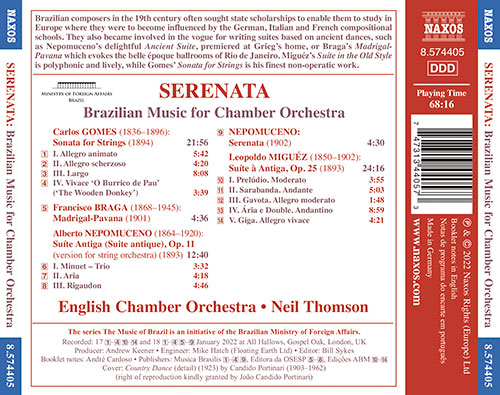
Texto do encarte do CD
GOMES • NEPOMUCENO • BRAGA • MIGUÉZ
Serenata
Throughout the course of the 19th century, various organisations were created in Brazil which enabled the development of musical activities to meet the entertainment needs of the country's urban bourgeoisie. The Imperial Conservatory, for example, was founded in Rio de Janeiro in 1848, while the Academy of National Music and Opera was established in 1857, and musical societies that organised regular concert seasons also began to emerge. One means of encouraging composers and musicians to continue their training was the granting of state scholarships allowing them to study in Europe. Born in Campinas, Antônio Carlos Gomes (1836–1896) travelled to Rio to take up a place at the Conservatory, where he was taught by the Italian Gioacchino Giannini. He then worked as a répétiteur at the Academy and took part in various operatic productions. Two of his own operas were staged in Rio, earning him a scholarship to study with Lauro Rossi in Milan. Gomes' biggest artistic success was Il Guarany (1870), which was premiered at La Scala and opened up to him the other great opera houses of Europe.
Other Brazilian composers too consolidated their musical education overseas, writing works that were clearly in tune with the aesthetic trends then fashionable in Europe. Leopoldo Miguéz (1850–1902) was born in Niterói but his family moved to Spain when he was just two. They lived in Vigo until 1857, after which they settled in the Portuguese city of Porto. Miguéz studied violin with Nicolau Medina Ribas and harmony and composition with Giovanni Franchini. In 1870, the family returned to Brazil. Twelve years later, in France and armed with a letter of introduction from Emperor Pedro II, Miguéz met leading composers such as Ambroise Thomas, director of the Paris Conservatoire, Vincent d'Indy and César Franck. It was also at this time that he came into contact with the music of Wagner. In 1890, soon after Brazil had become a republic, the Conservatory was transformed into the National Institute of Music and Miguéz was appointed its first director.
Alberto Nepomuceno (1864–1920) was born in Fortaleza, capital of the northeastern state of Ceará. After initially studying composition with Euclides Fonseca in Recife and Miguel Cardoso in Rio de Janeiro, he left for Europe in 1888, enrolling at the Liceo Musicale di Santa Cecilia in Rome, where he studied with Eugenio Terziani, Cesare De Sanctis and Giovanni Sgambati. Nepomuceno then went to Germany where he studied at the Akademische Meisterschule and the Stern Conservatory in Berlin, with Heinrich von Herzogenberg and Max Bruch. Through Norwegian pianist Walborg Bang, a fellow student and his future wife, he met Edvard Grieg. After further studies with Alexandre Guilmant at the Schola Cantorum in Paris, he returned to Brazil in 1895 and, after the death of Miguéz, became director of the National Institute of Music.
Antônio Francisco Braga (1868–1945) was born in Rio de Janeiro, and his musical training began in 1876 at the city's Home for Destitute Children, where he lived after the death of his father. Following studies at the Imperial Conservatory he was awarded a state scholarship enabling him to study composition with Massenet at the Paris Conservatoire. In 1894 he began travelling within Europe, visiting various cities in Switzerland, Italy and Germany, before returning to Rio in 1900 and establishing his career as a conductor. Two years later, he was appointed professor of composition at the National Institute of Music.
Primarily active in Italy, Carlos Gomes was one of the composers who made the transition from Verdi's generation to that of Mascagni and Puccini, by moving towards verismo. Miguéz is recognised as the great Brazilian exponent of the progressive philosophies of the New German School, especially in his symphonic poems and stage works. Some of Nepomuceno's output can be classified within the Germanic current of so-called pure or absolute music, part of a tradition we can trace back to Mendelssohn, Schumann and Brahms. Braga, by contrast, is one of the representatives of the French-influenced trend in Brazilian music. Taking a broader view of the orchestral music of Brazilian Romanticism, however, may reveal composers whose work is more eclectic than these neat aesthetic categories might suggest.
The Sonata for Strings is the finest example in Gomes' catalogue of an instrumental work unconnected to one of his operas. Composed in Milan in 1894, it was dedicated to the Campinas music association run by his oldest brother, José Pedro de Sant'Anna Gomes. Its four movements demonstrate the composer's sure command of the non-operatic instrumental idiom. The first is in sonata form, while the middle two appear in reverse order as far as the conventional pattern is concerned, with the Allegro scherzoso coming before the slow movement. The finale is subtitled 'O burrico de pau' ('The Wooden Donkey'), and here Gomes expresses extra-musical ideas, using techniques such as pizzicato and col legno, as well as rhythmic ostinatos to portray galloping.
Free forms, lyrical in nature – very much to the Romantic taste – were also used by a wide range of Brazilian composers. Nepomuceno's Serenata is one such work. Written in 1902 in Petrópolis, it is cast in a single movement. In the first part the violins set out a light, graceful melody above a pizzicato accompaniment. Contrast is created in the dramatic second part and, after a brief transition, the work ends with the return of the opening material.
In the late 1800s, there was a widespread European trend for writing suites based on the dances of earlier centuries, and a number of Brazilian composers drew inspiration from the same source. Nepomuceno's friendship with Grieg influenced the composition of his Suíte Antiga, Op. 11 for piano. The work was written in Bergen in 1893 and premiered there during a soirée at Grieg's home. The following year, Nepomuceno transcribed three of the four movements for strings and the resulting work was first performed by the Berlin Philharmonic. He treats the typical dances of the Baroque period in Romantic style, although the Minuet also has echoes of its Classical counterpart. In the Aria, the model is Bach, especially those movements in which the latter emphasises accompanied melody, such as the Adagio from Brandenburg Concerto No. 1, the Arioso from the Cantata, BWV 156 or even the Air from Orchestral Suite No. 3. The work concludes with a Rigaudon, in which Nepomuceno contrasts a fasterpaced first section full of incisive, accented articulations with a more lyrical central section.
Another work reflecting Brazilian composers' dialogue with reinterpreted ancient forms is Braga's Madrigal-Pavana of 1901. His chosen title links the lyricism of the vocal genre of the madrigal with the pavane, a sedate Spanish dance featuring hesitation steps. The Madrigal-Pavana calls to mind the ballroom dances that were so popular in belle époque Rio de Janeiro.
Miguéz's Suíte à Antiga, Op. 25, composed in 1893, is very different from his intensely dramatic programme music, despite calling for pairs of winds, horns and trumpets, four trombones and timpani, as well as strings. In the Prelúdio the emphasis is on polyphonic textures, with a predominant use of imitation. The Sarabanda is written for strings alone and Miguéz here explores tessituras that give the movement an austere atmosphere. Wind, brass and timpani return in the Gavota, whose faster pace and short articulations create the necessary contrast both with the two preceding movements and with the Ária, notable for its melancholy oboe solo, whose melody is later repeated by the strings and by the orchestral tutti. There is another prominent, and livelier, solo in the Double, a varied version of the Air, this time for flute. The work concludes with a Giga, whose theme is treated in fugato, as we can hear from the characteristic repeats and binary design.
André Cardoso
Professor at the School of Music of the Federal University of Rio de Janeiro
President of the Brazilian Academy of Music
English translation: Susannah Howe
NEIL THOMSON (1956)
Neil Thomson was born in 1966 and studied conducting at the Royal College of Music with Norman Del Mar and at Tanglewood Summer School with Leonard Bernstein.
He has been principal conductor and artistic director of the Goiás Philharmonic Orchestra since 2014, leading the orchestra to national prominence with its championing of Brazilian and contemporary repertoire. He also enjoys a busy international career working with all the major UK orchestras and with the Yomiuri Nippon Symphony Orchestra, Tokyo Philharmonic Orchestra, Tokyo Symphony Orchestra, Russian National Orchestra, São Paulo State Symphony Orchestra, WDR Rundfunkorchester, Israel Symphony Orchestra, Lahti Symphony Orchestra, and the Romanian National Orchestra.
He has performed with many distinguished soloists including Dame Felicity Lott, Sir Thomas Allen, Sir James Galway, Nelson Freire, Jean Louis Steuerman and Antonio Meneses.
From 1992 to 2006 he was Professor of Conducting at the Royal College of Music, London, the youngest person ever to hold this position. He was made an Honorary Member of the RCM in recognition of his services to the institution.
Crítica internacional
'The delightful Sonata for Strings by Carlos Gomes (1836–96) that opens the disc may remind some of, say, Tchaikovsky’s Souvenir de Florence… The good humour continues thereafter in this enjoyable snapshot of the 19th-century Brazilian chamber orchestra music, all seemingly played with relish by the ECO.'
BBC Music Magazine 
É preciso estar logado para comentar. Clique aqui para fazer seu login gratuito.


![O pianista Pablo Rossi [Divulgação] O pianista Pablo Rossi [Divulgação]](/sites/default/files/styles/menu_preview/public/w-pablo-rossi_0.jpg?itok=MZVe60RE)
![A Sinfônica Heliópolis no Theatro Municipal de São Paulo [Divulgação/Georgia Leopoldi] A Sinfônica Heliópolis no Theatro Municipal de São Paulo [Divulgação/Georgia Leopoldi]](/sites/default/files/styles/menu_preview/public/w-OrquestrasDeHeliopolis-Credito_GeorgiaLeopoldi.jpg?itok=WHQQbYb1)
![O atua regente titular da OER, Wagner Polistchuk, em concerto com o grupo [Divulgação/Rafael Salvador] O atua regente titular da OER, Wagner Polistchuk, em concerto com o grupo [Divulgação/Rafael Salvador]](/sites/default/files/styles/menu_preview/public/w-oer-Rafael-Salvador_CR7_9255.jpg?itok=dnWUXr1X)
![O maestro Julian Kuerti durante concerto com a Opes em 2024 [Divulgação/Daniel Ebendinger] O maestro Julian Kuerti durante concerto com a Opes em 2024 [Divulgação/Daniel Ebendinger]](/sites/default/files/styles/menu_preview/public/w-20240831-opes-tmrj-202-foto-daniel-ebendinger.jpg?itok=fIvESFcO)
![A Orquestra do Festival durante concerto no Auditório Claudio Santoro na 54ª edição do evento, em 2024 [Divulgação/Íris Zanetti] A Orquestra do Festival durante concerto no Auditório Claudio Santoro na 54ª edição do evento, em 2024 [Divulgação/Íris Zanetti]](/sites/default/files/styles/menu_preview/public/w-campos.jpg?itok=V_dfkpf-)
![Karin Uzun, Fernando Portari, Fulvio Souza e Cinthia Cunha em cena do espetáculo [Divulgação] Karin Uzun, Fernando Portari, Fulvio Souza e Cinthia Cunha em cena do espetáculo [Divulgação]](/sites/default/files/styles/menu_preview/public/w-navalha_0.jpeg?itok=D9JzSjqK)
![A pianista Yuja Wang durante concerto no Teatro Cultura Artística [Divulgação/TCA] A pianista Yuja Wang durante concerto no Teatro Cultura Artística [Divulgação/TCA]](/sites/default/files/styles/menu_preview/public/w-yuja_tca.jpeg?itok=_TXif-jn)
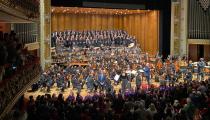
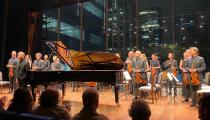
![O violonista João Luiz [Divulgação/Sarah Blesener] O violonista João Luiz [Divulgação/Sarah Blesener]](/sites/default/files/styles/menu_preview/public/w-joao_luiz.jpg?itok=raioF2-3)
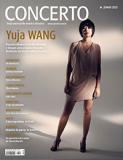

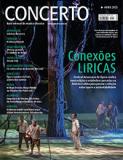
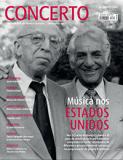
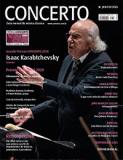
Comentários
Os comentários são de responsabilidade de seus autores e não refletem a opinião da Revista CONCERTO.